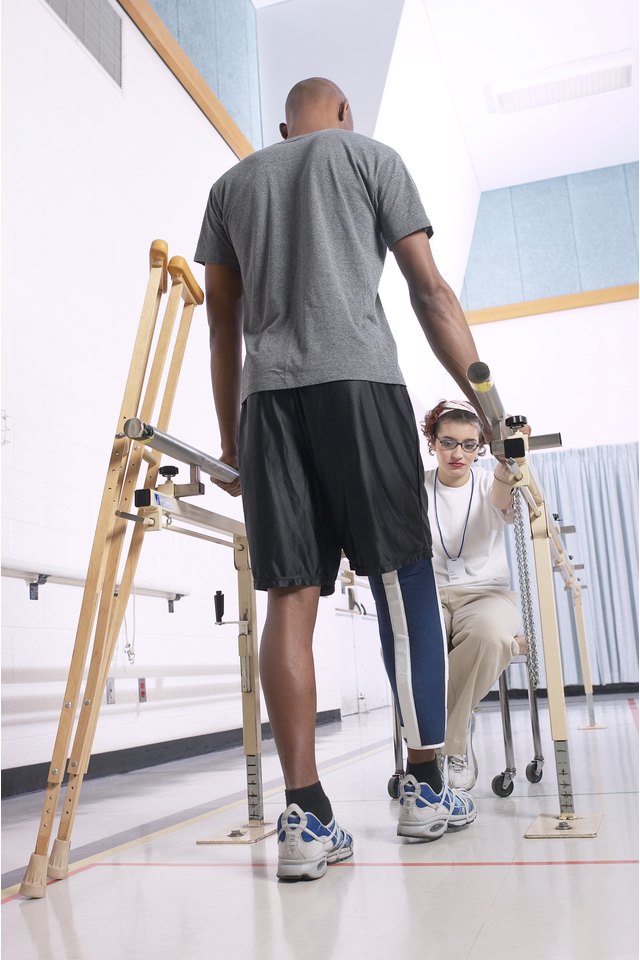Isometric Leg Strength Tests

When your leg muscles contract isometrically, they are working to hold you in a set, static position. The angle of your ankles, knees and hips doesn’t change. The stronger your leg muscles are isometrically, the more force they’re able to produce when they’re holding that static position. To test your isometric leg strength, you’ll need an additional piece of exercise testing equipment that measures force production.
Benefits and Disadvantages
Testing the isometric strength of your legs is relatively easy and can be completed in less than a minute. Regularly testing the strength of your legs will allow you to see if your workout sessions are effective. If you’re seeing no improvements in your test scores, you know that you need to make adjustments to your workouts. Physical therapists will use the test to measure the leg strength developments of their patients. A disadvantage of the isometric leg strength test is that you must have access to a leg strength dynamometer, which is typically found at physical therapy clinics and some fitness gyms.
Test Methods
You’ll need a strength dynamometer that features a cable tensiometer to test the isometric strength of your legs. Before you begin the test, check that the dial on the dynamometer is set to zero. Position your feet shoulder-width apart as you stand on the base of the dynamometer. Set the chain on the dynamometer so that your knee joints are bent to about 110 degrees, which would mean your thighs are slightly higher than parallel to the floor. Reach down in front of you and grip the bar with your palms facing your thighs. Pull up the bar as hard as you can while trying to extend your legs. Your arms should remain straight throughout the entire test. There won’t be any movement at your joints. The dynamometer will measure how much tension your legs are producing as they isometrically contract.
Considerations
For your test measurements to be accurate in depicting any increases or decreases in isometric leg strength, go through the same exact routine prior to stepping on the strength dynamometer. Complete the same warmup, which should consist of five to 10 minutes of low-intensity aerobics to prepare your muscles. If during re-testing, you complete a higher-intensity warmup, your muscles could be more fatigued and thus your results would be skewed accordingly. Although there’s no harm in testing yourself regularly, a period of four to six weeks in-between tests will likely be more adequate for seeing significant increases in isometric leg strength.
Isometric Endurance
Testing the isometric strength of your legs looks at the amount of force your lower body muscles can produce when they’re holding a position against resistance. You can also test the isometric endurance of your legs, which is how long your lower body muscles can hold a contraction. The wall sit exercise is the most common test for leg isometric endurance. Stand with your back to a wall with your feet about 1.5 feet away and shoulder-width apart. Lean back against the wall and then slide your hips and back down the wall until your knees are bent to 90 degrees. Measure how long you’re able to hold this position.
References
Writer Bio
Kim Nunley has been screenwriting and working as an online health and fitness writer since 2005. She’s had multiple short screenplays produced and her feature scripts have placed at the Austin Film Festival. Prior to writing full-time, she worked as a strength coach, athletic coach and college instructor. She holds a master's degree in kinesiology from California State University, Fullerton.
